As we’ve come to learn, the ending of February and the beginning of March is a time of celebration for the Romanian people. They celebrate the new agrarian year through old traditions such as the Week of Sântoader’s Horses, Dragobete, and now Mărţişor – little Mars. By far it is one of my favorite traditions and my collection of “mărţişoare” is a testimony to that. I’ve kept the most significant ones since I was a child and to this day, I cannot wait for the 1st of March to come around to celebrate and of course, to receive (and make myself) new mărţişoare.
This celebration is important to me because of its significance and lore… “I’ll put little Mars through a little nail”, said Baba Dochia in defiance of the war god and guardian of agriculture when she ascended the mountain with her flock. Thus, the tradition of pinning little Mars close to one’s heart was born.
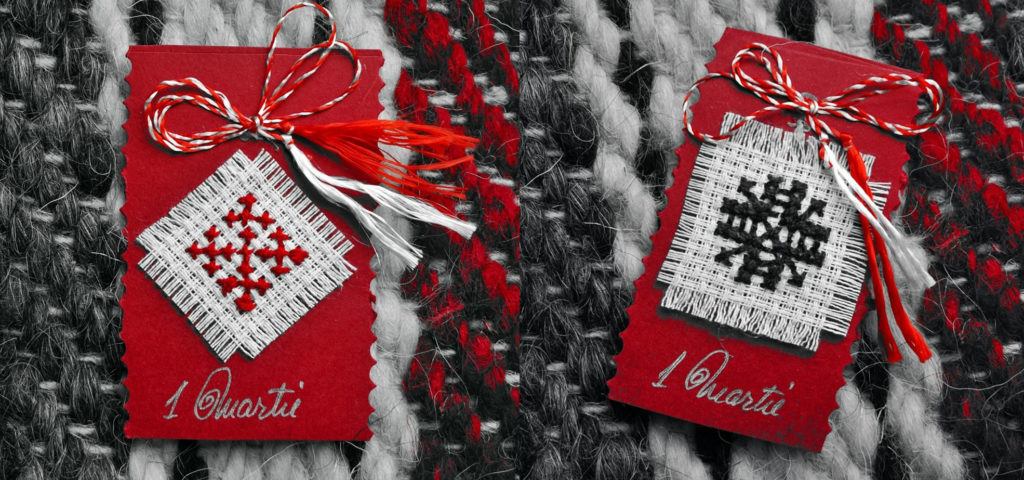
The Primordial Signs used as Stitched Symbols by Romanians and their ancestors, the Daco-Thracians, are derived from the symbols of the Dacian Solar Cult. The symbols are complex patterns of which each element has a purpose. The shape of the rhombus is used as a symbol of Earth’s fertility and vital force. The angles represent the purpose of a life, giving sense and direction, while the segments are associated with different aspects of life, depending on their numbers, for example, 3 parallel lines represent the 3 stages of life: birth, self-realization, and death.
Mărţişor is a Romanian tradition of Daco-Roman origins celebrated at the beginning of spring, on March 1st. The word Mărţişor is the diminutive of March (“Martie” in Romanian) and it means “little March”. In ancient Rome, New Year’s Eve was celebrated on the 1st of March and it was named Martius in the honor of the god of war and guardian of agriculture, Mars. Daco-Thracians, also celebrated New Year’s Eve on the first of March.
While the Romans named their March after their god Mars, Thracians named their March after the god Marsyas Silen, the inventor of the pipe, a wind instrument that has spiritual significance for the Romanian people. His cult celebrated fertility and the rebirth of nature. Mărţişor is also the name for the red and white rope, also called “the Rope of the Year” (“funia anului” in Romanian), which is given to dear ones as a sign of appreciation and admiration on the 1st day of March.
The Mărţişor is a talisman as well as a symbolic calendar. According to old traditions, it must be given before sunrise and it is believed that those who wear it will be strong and healthy throughout the new year. In the old days, both men and women used to wear it as bracelets, pendants or pinned to their clothes, close to the heart, until the last day of March when they tied it to a twig of their twin tree, or a fruit tree if they didn’t have a twin in nature.
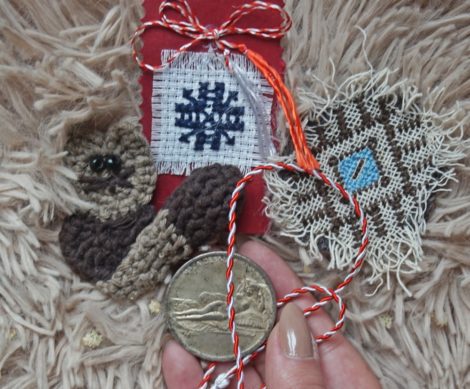
The Rope of the Year is a symbolic calendar representative of the battle between the Spirit of Winter and the Spirit of Summer. It also symbolizes the union of opposites and a marriage of the masculine and the feminine. It is traditionally attached to coins, totems, or stitched symbols that are meant to bring vitality, force, health, and good luck.
Nowadays, only women keep the tradition of wearing it, but men participate in the tradition by offering it to them. Even though there is a huge market for the Mărţişor Day in Romania, where you can find all sorts of charms, trinkets and jewelry tied to the red and white rope made of either wool or silk, traditionally the rope is accompanied by a stitched symbol or a coin (silver or gold) that could be worn around the neck as a pendant.
The rope symbolizes the union of winter and summer, the gold coin symbolizes the Sun, and the silver coin symbolizes the Moon. In the old days, after wearing the coin for a certain amount of time, people used it to buy red wine and sweet cheese with. It was believed that coin would invest the wine and cheese with magical powers and that their faces would remain as white as cheese and as rubicund as the wine for the rest of year.
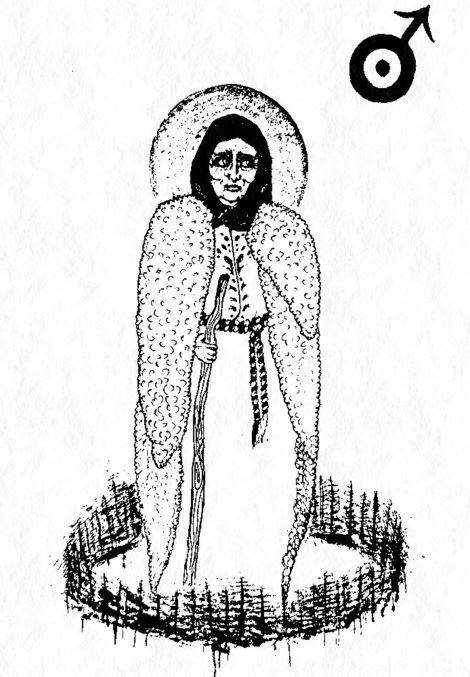
“White is the father, the sky above all, and black is the mother, the earth beneath all.” – It is said that Baba Dochia was the first to spin the Rope of the Year. She did in black and white to symbolize the union between the Earth and the Heavens. However, the god Mars, who had an influence on Dochia’s life, would influence the Rope as well, by turning the black thread red. – Drawing of Baba Dochia by Radiana Piț | Instagram: @crowhag
The two strings that make the Rope of the Year represent the union of opposites, the link between winter and summer, dark and light, war and peace, death and life. It is said that it is the thread of the days of the year and it was spun by Baba Dochia herself, such as the Fates spun the threads of life and destiny at birth. One legend says that the Dacian princess Dochia originally spun the thread in white and black because white is the father, the sky above all, and black is the mother, the earth beneath all.
Due to Roman influences, the black thread became red instead, as inspired by the Roman tradition of embarking on military campaigns in March. Thus, the red string now symbolizes vitality, life, fire and blood, and the passion of women, while the white string symbolizes the clouds, victory, and the wisdom of men. Therefore, it also symbolizes the union between the feminine and the masculine which gives birth to the eternal cycle of nature.
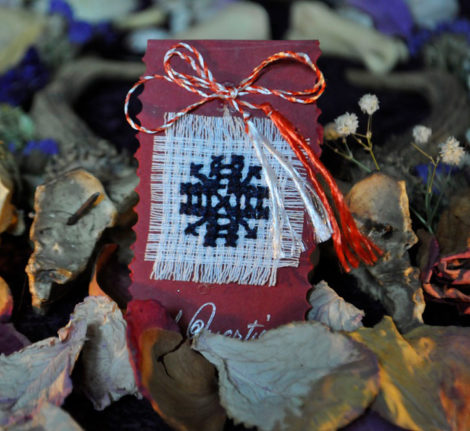
Mărţişor with Stitched Symbol: This is an inherently Solar Symbol, with a combination of the Cross and Star motifs, which are both associated with the Sun. In Romanian tradition, the Cross protects against “deochi” (enchantments, jinxes or “evil eye”), while the Star is believed to help the one who wears it find their way guided by the light of their twin star in the heavens. The chosen color is of importance as well. A symbol stitched in black on a women’s Ia or Mărţişor is a representative of her social status as a wise woman. It is also a symbol of their decency and sobriety.
Even though nowadays Mărţişor is a token of friendship, respect, love, and admiration, Daco-Romanians still use this opportunity to celebrate the agrarian New Year. On the first day of March women not only give and receive this token of admiration, but they also choose one of the Hags in order to predict how their year and old days will be like. The Hags (Babele in Romanian) are the first 9 days of March, when Baba Dochia is said to haunt our plane, as the spring sets in.
Mărţişor is a lovely celebration of ancient origins that has survived to this day and that has still kept much of its original tradition. The Rope of the Year is a symbolic calendar that unites opposites and consecrates nature. This is what makes it a potent talisman that can be used to bring about health, fertility, and good luck. So, as a token in time, this is my Mărţişor to you.

www.Nettlesgarden.com – The Old Craft


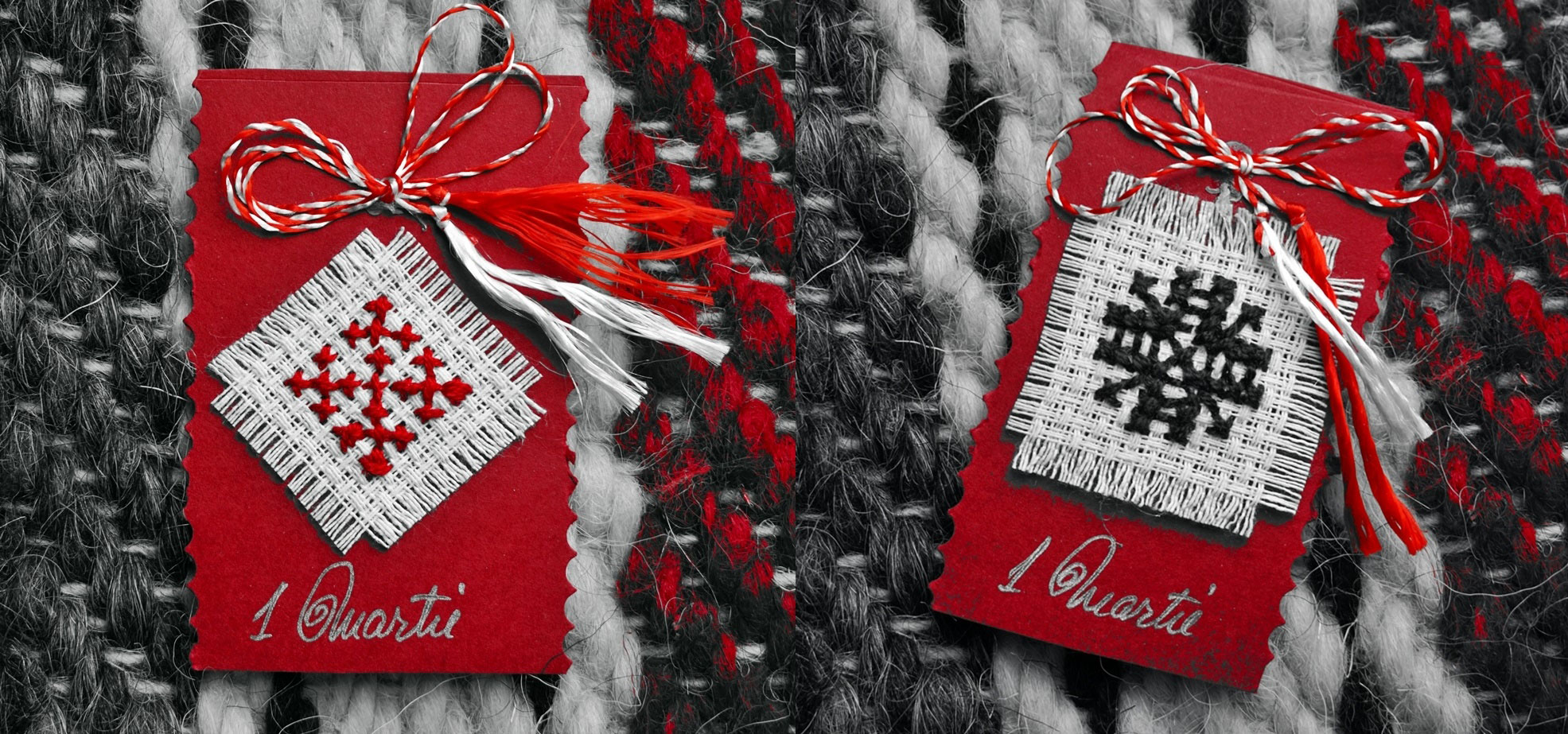
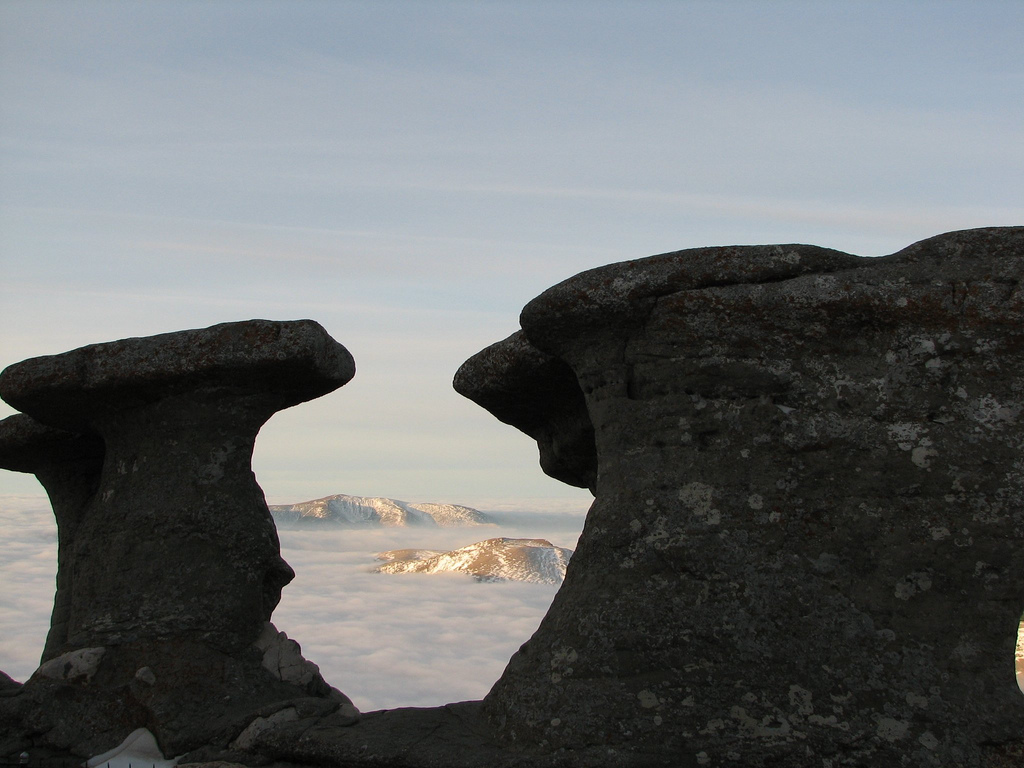
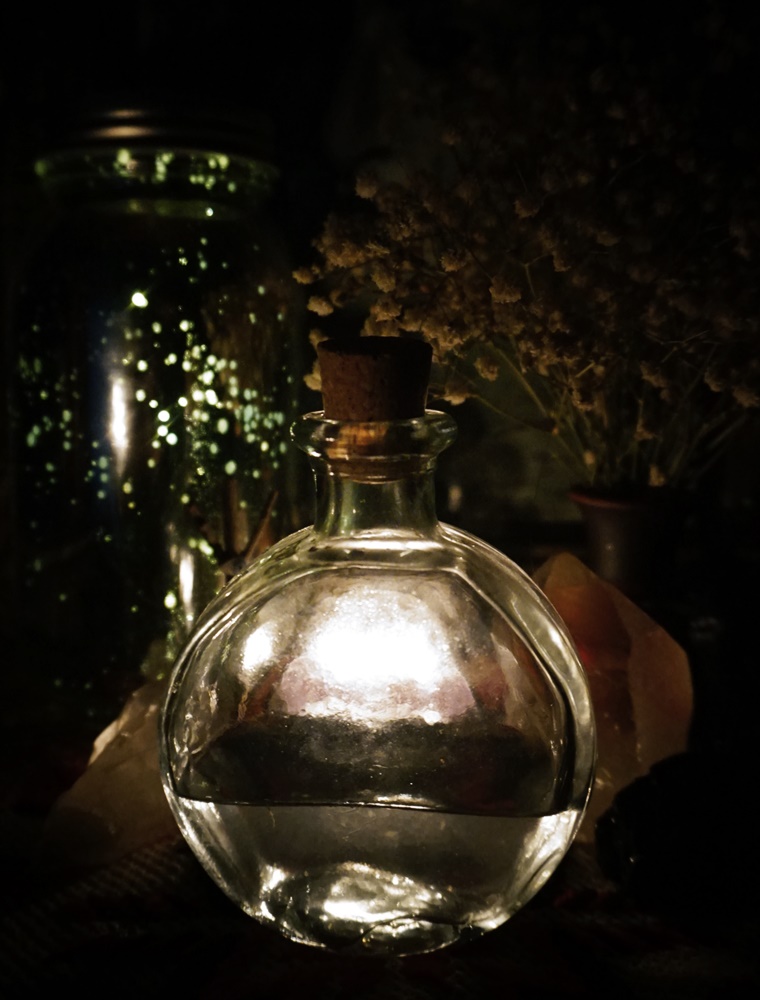
M | November 21, 2021
|
This adds some new symbolic fun and new knowledge to the beginning of springtime, which is often kind of “boring” to me without these traditions to spice it up, especially after the end of the darker part of the year, which is rich with lore from all different cultures.